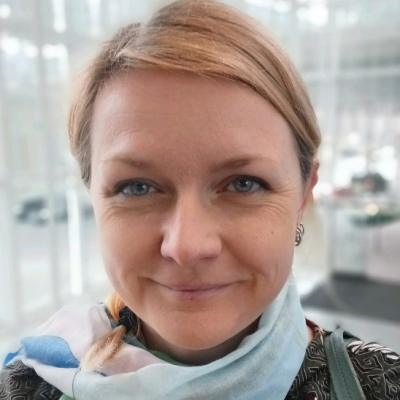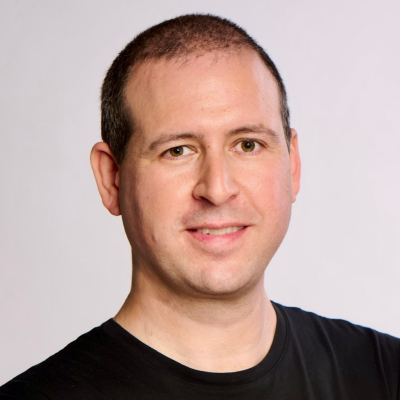Agenda Day 1
8:00 am - 8:30 am
REGISTRATION & COFFEE
8:30 am - 8:35 am
OPENING REMARKS FROM IQPC
8:35 am - 8:45 am
OPENING REMARKS FROM THE CHAIRPERSON
Chris Benson -
Partner & Head of Electronics,
HGF
8:45 am - 8:50 am
LIVE POLLING
8:50 am - 9:20 am
KEYNOTE PRESENTATION: 28 YEARS IN THE BUSINESS – WHAT I LEARNT AS BAYER’S HEAD OF IP
Jorg Thomaier -
Former Head of IP,
Bayer
9:20 am - 9:35 am
QUICK-FIRE PRESENTATION: IN REAL TIME – A BRIEF OVERVIEW OF BIG DECISIONS
Bjorg Texel -
Lead Trademark Counsel (Head of Trademarks),
Maersk
9:40 am - 10:10 am THINK TANK: AN OCEAN OF PATENTS – IF THE SEP BUSINESS MODEL IS FAILING, HOW CAN IP COUNSEL PREPARE THEMSELVES?
Le Chen - Senior Legal Director, Head of IP Policy (Europe), Xiaomi Technology- Consider how SEP holders might adapt their strategies to maintain influence in a landscape saturated with competing claims and questionable “essential” declarations
- Explore how the rise of AI-driven innovation could disrupt existing patent value chains—and how counsel can anticipate and manage this shift in their licensing and litigation strategies
- Identify practical steps IP counsel can take now to future-proof against the erosion of the SEP business model
9:40 am - 10:10 am 1:1 BUSINESS MEETINGS
10:15 am - 10:45 am THINK TANK: DETECTING THE UNDETECTABLE – STRATEGIES TO COMBAT FRAUD & PROTECT YOUR CUSTOMER
- Delve into practical strategies and tools to identify and prevent scams before they reach customers
- Determine best practices for protecting brand integrity and customer trust through proactive action
- Analyse ways of building and maintaining customer trust, and of quantifying it
10:15 am - 10:45 am 1:1 BUSINESS MEETINGS
10:50 am - 11:20 am THINK TANK: WHAT’S IN A DESCRIPTION – PREPARING PATENT APPLICATIONS IN THE AGE OF AI DRAFTING
Janine Swarbrick - Partner and Patent Attorney, HGFAI tools are transforming how patent applications are drafted. While more content should mean stronger protection. But here’s the catch: when it comes to patent descriptions, more can be dangerous. A recent European Patent Office decision (G 1/24) made this crystal clear. The Board used the description, packed with extra examples, to interpret the claims. The result? The claims were deemed to be broader than intended, and the patent collapsed. What was meant to give flexibility turned into a fatal weakness. For US companies filing globally, this is a serious warning: if AI-generated text (or old drafting habits) sneaks in language that changes the meaning of your claims, you may be setting yourself up for challenges, oppositions, and even invalidation of your patent down the line.
• Learn why “too much detail” in a description can undermine enforceability in Europe.
• Discuss how AI-generated text can quietly shift the scope of your claims.
• Discover practical strategies to draft smarter, keeping flexibility while safeguarding enforceability worldwide.
10:50 am - 11:20 am 1:1 BUSINESS MEETINGS
11:25 am - 11:55 am
PRESENTATION: GUARDIANS OF INNOVATION – LEGAL STRATEGIES IN THE AGE OF PATENT TROLL THREATS
Ken Seddon -
CEO,
LOT Network
Patent Assertion Entities (PAEs, aka patent trolls) are responsible for buying 70% of the patents in the open broker market and for filing 86% of all patent litigation against Operating Companies. The real irony is that most of the patents used by PAEs originated with those same operating companies. Since operating companies are the ones providing most of the assets to PAEs, a private ordered solution is the most efficient to address this issue.
- Dive into the global PAE business, its current trends, and the problems PAEs create for those they sue
- Discuss emerging developments, trends and challenges in litigation funding
- Review how will the Unified Patent Court (UPC) is already increasing NPE litigation in Europe and will continue to do so
- Learn how a private ordered solution is the most efficient way to mitigate this risk
11:55 am - 12:10 pm
QUICK-FIRE CASE STUDY: THE THREE MUSKETEERS – HOW WE ORGANISE OUR TEAM
Tim Oelmann -
Head of Business IPR Management,
Deutche Telekom
Hear from one company who is organising their team differently – learn from an alternative internal structure, draw inspiration, and take the opportunity to rethink and revamp yours for improved productivity, happier employees and optimal protection of your assets.
12:10 pm - 12:55 pm
PANEL DISCUSSION: FROM GAMING TO FINTECH AND BEYOND – FIGHTING FRAUD, DEFENDING IP
Itai Saldinger -
Director of Intellectual Property,
Playtika
Itai Galmor - CRO, BrandShield
12:55 pm - 1:55 pm
LUNCH
As IP departments evolve beyond traditional patent filing and portfolio management, many are beginning to build environments in which they can continue to thrive and drive forward by partnering with the likes of universities and government associations. These ecosystems allow them to leverage academic research, emerging talent, and public innovation initiatives to create a more dynamic and future-facing approach to their work. Universities can bring deep domain expertise and exploratory R&D, while government associations might help them stay abreast of the lesser-known regulations emerging – IP counsel must grasp the opportunity to forge their own symbiotic system, allowing them to accelerate innovation and strengthen competitiveness.
- Explore the ways university partnerships can fill R&D gaps and expand corporate innovation
- Discuss the value government associations can bring in supporting IP teams through funding, policy and infrastructure
- Home in on the value of aligning academic research outputs with commercial IP strategies to maximise impact
2:25 pm - 2:40 pm
QUICK-FIRE PRESENTATION: IN REAL TIME – A BRIEF OVERVIEW OF BIG DECISIONS
Nishat Ruiter -
General Counsel,
TED Conferences
2:40 pm - 3:25 pm
PANEL DISCUSSION: A LOOK INTO THE UPC THREE YEARS ON – ASSESSING THE TRENDS, FAILURES AND SUCCESSES OF THE NEW AGE OF PATENT FILING
Sean Alexander -
Head of IP,
Umicore
Karin Dyvelkov - Vice President of Intellectual Property, GEA Group
James Horgan - Chief IP Counsel - International Litigation and Policy, Merck Sharp & Dohme Corp.
- Delve into filing and litigation trends emerging under the UPC in the first three years
- Discover lessons learned from missteps and mistakes, and how stakeholders are adapting
- Learn about how the UPC may evolve, and its implications for global IP management

James Horgan
Chief IP Counsel - International Litigation and PolicyMerck Sharp & Dohme Corp.
3:25 pm - 3:55 pm
SCENARIO-BASED WORKSHOP: ALL ROADS LEAD TO AI – ASSESSING THE DOS AND DON’TS OF THE MOST IMPORTANT TOOL OF THE TWENTY-FIRST CENTURY
This interactive workshop will help you leave the room with actionable insights by placing you and your team in an AI-related situation with twenty minutes on the clock to come up with a strategy. Each team (of four or five) will be given a scenario. Think:
- An internal team used customer support transcripts, including sensitive client data, to train a sentiment analysis model. The model is now being commercialised.
- Your R&D team presents a breakthrough chemical compound designed entirely by your proprietary AI system. No human contributed to the design. The business wants to file a patent immediately.
- Marketing used an AI tool to generate a logo for a new product. A week before launch, you discover it closely resembles a registered trademark in another jurisdiction.
- A viral TikTok trend highlights a “cheap alternative” to one of your company’s products. Counterfeits flood online marketplaces and social platforms across multiple regions. Enforcement teams are overwhelmed, and customer complaints start tagging the brand directly.
At the end of the session, each team will share their scenario and formalised strategy with the rest of the room, enabling everyone to walk away with potential solutions to a variety of scenarios.
4:00 pm - 4:30 pm THINK TANK: THE A-TEAM – HOW TO HIRE, TRAIN AND PROVE YOUR VALUE
Emily O'Neill - Head of Patents, BAT- Consider the impact of recognition, autonomy and purpose in sustaining motivation across your IP team
- Identify ways to attract and retain talent with hybrid skillsets in a competitive global market, and the role universities can play in your search
- Examine where your KPIs are failing, and what you can do to offer more tangible assets, namely through the use of data analytics
4:35 pm - 5:05 pm COFFEE BREAK & NETWORKING
4:35 pm - 5:05 pm 1:1 BUSINESS MEETINGS
5:10 pm - 5:40 pm THINK TANK: REINFORCING YOUR MOAT – STRATEGIES FOR PROACTIVITY OVER REACTIVITY IN ANTICOUNTERFEITING
Shelley Duggan - SVP & General Counsel - Global IP Protection & Anti-illicit Trade, Procter & Gamblecounterfeiters who exploit digital channels, fragmented supply chains, and consumer trust
gaps. This session explores how organizations can shift from defensive measures to proactive,
intelligence-led protection. By integrating data analytics, cross-functional collaboration, and
predictive risk modeling, brands can transform anti-counterfeiting from a cost center into a
strategic differentiator that safeguards revenue and customer loyalty.
• Discuss moving beyond take-downs and enforcement by leveraging data insights and early
warning systems to anticipate in advance
• Learn to strengthen protection through collaboration across internal teams, supply chain
partners and law enforcement
• Home in on the importance of treating anti-counterfeiting as a core component of brand
equity, using transparency and consumer engagement to reinforce trust and competitiveness

Shelley Duggan
SVP & General Counsel - Global IP Protection & Anti-illicit TradeProcter & Gamble
5:10 pm - 5:40 pm 1:1 BUSINESS MEETINGS
Peter Arrowsmith - Partner, European and UK Patent Attorney, and UPC Representative, Gill Jennings & Every LLP

















